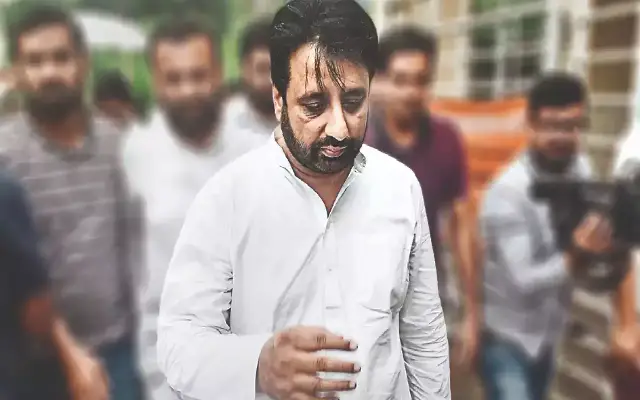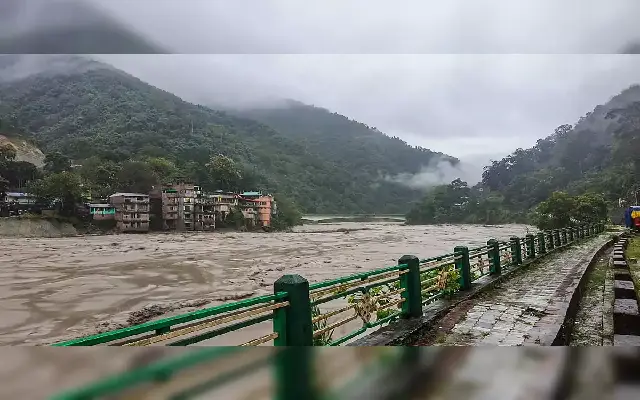 Mumbai: Posing a piquant situation, an Expert Study Committee (ESC) set up by the previous BJP government in Maharashtra has virtually exonerated Karnataka for the devastating floods of 2019 which inundated large parts of western and southern parts of Maharashtra, causing massive damage and losses.
Mumbai: Posing a piquant situation, an Expert Study Committee (ESC) set up by the previous BJP government in Maharashtra has virtually exonerated Karnataka for the devastating floods of 2019 which inundated large parts of western and southern parts of Maharashtra, causing massive damage and losses.
In its 3-volume study report, the ESC observed: “The study indicates that Almatti and Hippargi reservoirs in Karnataka and its flood operations have not adversely affected the flood situation in Maharashtra”.
Following the floods which submerged large parts of Sangli, Kolhapur, and adjoining towns, hitting a huge population, Maharashtra leaders had appealed to Karnataka and Prime Minister Narendra Modi to release the waters from the Almatti Dam (Karnataka).
After much persistence that its action could ease the crisis in this state, Karnataka had reluctantly complied, allowing its huge stocks of valuable waters to flow away.
The ESC was appointed by the previous BJP Chief Minister Devendra Fadnavis, with a former top bureaucrat Nandkumar Vadnere and current senior official Rajendra Pawar as Member-Secretary.
In the 426-page report submitted recently to the Maha Vikas Aghadi (MVA) government, the ESC has now practically acquitted Karnataka of any responsibility for the floods in this state, leading to red faces here.
At the same time, the ESC has pointed an accusing finger at large-scale encroachments in the Krishna, Bhima and other river valley basins in western and southern parts of the state which contributed to the flood catastrophe.
The ESC said the discharge carrying capacity of Krishna River could not handle the water released from Koyna Dam, its flow in the plains with many curves between Sangli and the state borders, which caused widespread floods on the inner and outer sides of the meanders compared to the straight reaches of the river.
While Sangli is on one such curve of the Krishna River, Kolhapur is on a curve of the Panchganga River – both erstwhile royal cities which bore the brunt of the 2019 calamity.
The flood situation was compounded by a series of confluences of different rivers like Krishna, Warna, Yerala-Krishna, Panchganga-Krishna, Dudhganga-Krishna within an area of around 50-55 kms which resulted in a stagnation zone with reduced flow velocity.
Due to the abnormally high water discharge in the Krishna River, a backwater effect was generated in its tributaries like Yerala, Warna, Panchganga and nallas like Bhilwadi, Nagthane, which further aggravated the floods as these tributaries and nallas could not drain out their discharges till the excess waters in the main Krishna River subsided.
The Krishna River remained flooded for a long duration � August 5-13 � as water spread in the tributaries and on floodplains but could not return back to the river course, leading to prolonged periods of inundation in the floodplains where many cities and villages are located.
The ESC has blamed encroachments and various kinds of developments that have hampered the natural drainage system of these rivers in western and southern Maharashtra contributing to the 2019 flood havoc.
Developmental activities have resulted in plot leveling, flattening of small nallas, obstructing streams by building retaining walls, riverside roads, bridges, culverts, reducing flow through pipes, clogging the systems by dumping debris or effluents, that were responsible for the long days of waterlogging last year.
The response of the Shiv Sena-Nationalist Congress Party-Congress regime, headed by Chief Minister Uddhav Thackeray, will be crucial since the ESC report may have tread on many political toes among the ruling allies.
The ESC has recommended a series of short and long term remedies pertaining to the encroachments – some apparently damning – which could prove to be a death-knell for massive constructions along various river banks in Pune, Sangli, Kolhapur and Satara districts – albeit with wider political ramifications.
Incidentally, in 2020 the very same areas have again become susceptible to floods after the first downpour with widespread inundation reported this week.
BY QUAID NAJMI


















